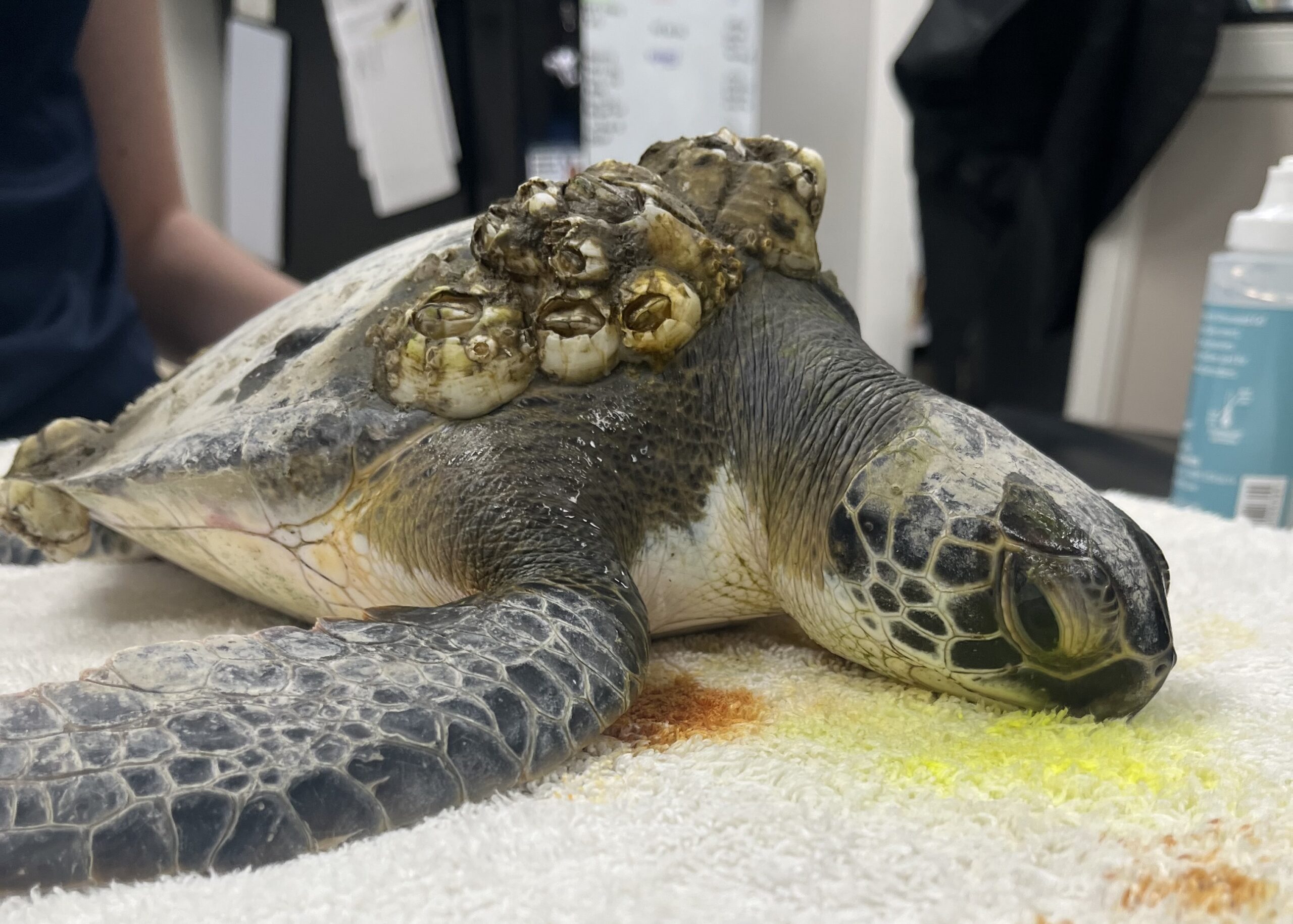Green (Chelonia mydas)
Stranding Location: Hilton Head Island, SC
Arrival Date: 1/17/25
Age: Juvenile
Sex: Unknown
Weight: 2.06 kg (4.54 lbs)
Case History
This tiny green sea turtle was found lethargic and floating off of the Skull Creek Boathouse dock on Hilton Head Island. Thistle was rescued and safely transported to the Aquarium by South Carolina Department of Natural Resources permitted volunteers and staff, and arrived quiet, alert and responsive.
Treatment
At admit, we began by checking Thistle’s vitals, which, for cold-stunned patients, includes taking both external and internal temperatures. Thistle was a chilly 52 degrees Fahrenheit internally and had a heart rate of 6 beats per minute, but luckily had a stable blood glucose level. We performed a thorough physical exam, and unlike our previous cold stun patients this year, Thistle did not have any eye ulcers! That being said, there was an area of concern above the right rear flipper that might potentially be fibropapillomatosis (FP). FP is very contagious amongst sea turtles and is a herpes virus that can present externally as cauliflower-like tumors. We do not know for certain yet if Thistle has FP, but because this virus is so contagious, we will have her/him under quarantine to ensure that this potential FP doesn’t spread to other patients. To get a better internal look at what else Thistle might be facing, we took a CT scan and found that s/he has a bone abnormality in the right rear flipper. It’s possible that this is a previous injury from a predation event, or it could be the beginnings of a bone infection. We will continue to monitor it.
To start helping Thistle feel better, we gave her/him fluids with calcium and vitamins. Once this little green is a bit warmer, s/he will start on antibiotics as well. After treatments, we began the process of slowly warming Thistle up by settling her/him into our surgical suite, where we lowered the thermostat and warmed the temperature slowly overnight. To avoid shocking Thistle’s system, we will continue to slowly raise the thermostat over the coming hours and days.
Updates
January 21, 2025: Thistle has made some good progress over the last few days! We were able to gradually raise Thistle’s internal temperature to 70 degrees F, and were able to introduce her/him to water. Once in water, Thistle was pretty weak, so in order to conserve energy, we elected to place her/him in a kiddie pool. This allows for weaker turtles to be in water — where they are most comfortable — but it is much shallower and means that they do not have to exert as much energy when trying to breathe. In addition to being in water, Thistle has also begun to eat fish! This is a great step, and we look forward to seeing Thistle get a little bit stronger and healthier every day!
February 15, 2025: Luckily for Thistle, the lesion in her/his inguinal region healed and was determined to not be fibropapillomatosis. Overall, Thistle’s energy and demeanor has greatly improved. In fact, Thistle even graduated from the kiddie pool to half a tank of water!
March 15, 2025: Thistle did so well with water depth increases this month that s/he graduated to Zucker Family Sea Turtle Recovery™! Thistle also finished all of her/his prescribed medications. Come by the Aquarium and wave hello to Thistle!
April 15, 2025: Thistle has been doing so well that s/he received a PIT tag this past month! Stay tuned to see how Thistle’s bloodwork results turn out, and for hopefully warmer local waters!
May 6, 2025: Thistle was cleared for release and boated out into the saltmarsh of Cape Romain National Wildlife Refuge to return home!


